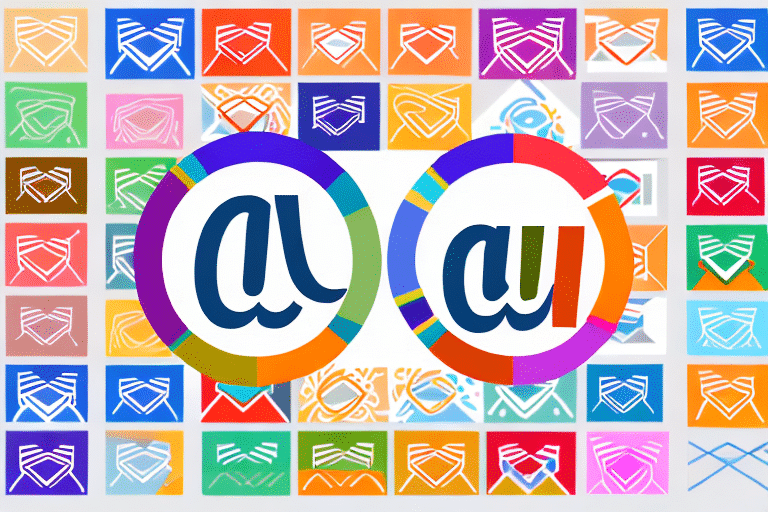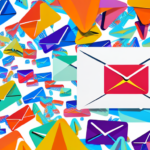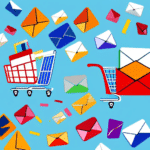7 Examples of Effective Customer Retention Emails
As a business owner, prioritizing customer retention is crucial for sustained growth. Keeping your existing customers happy and engaged ensures their loyalty to your brand. One of the most effective strategies for maintaining this connection is through email marketing. In this article, we explore seven examples of customer retention emails that have delivered impressive results. We also delve into the importance of these emails, strategies for creating them, and best practices for optimizing your campaigns.
Why Customer Retention Emails are Important for Your Business
Customer retention emails are a vital component of your overall marketing strategy, offering a direct line of communication to your existing customers. These emails help keep your brand top-of-mind, reminding customers why they chose your business initially. According to a Bain & Company report, increasing customer retention rates by 5% can boost profits by 25% to 95%, highlighting their cost-effectiveness compared to acquiring new customers.
Moreover, retention emails allow you to gather valuable feedback. Incorporating surveys or review requests can provide insights into what customers appreciate or dislike about your products or services, enabling you to refine your offerings.
Personalization is another significant advantage. By leveraging data such as purchase history and browsing behavior, you can tailor your emails to offer relevant products or promotions, making customers feel valued and enhancing their loyalty to your brand.
Understanding the Basics of Customer Retention Emails
Customer retention emails target customers who have already made a purchase, aiming to keep them engaged and encourage repeat business. These emails can range from thank-you notes to personalized promotional offers. The effectiveness of these campaigns hinges on several fundamental elements:
Personalization
Using the customer's name and referencing their previous interactions with your brand makes the email feel more customized, increasing the likelihood of engagement.
Timing
Striking the right balance in timing is essential. Sending an email too soon after a purchase might seem pushy, while waiting too long could result in customer disengagement. An optimal timing strategy maximizes effectiveness.
Crafting a Winning Customer Retention Email Strategy
Developing a successful customer retention email strategy involves aligning your business goals with your audience's needs and preferences. Here are key steps to consider:
Audience Segmentation
Segment your audience based on behavior, demographics, and interests to create targeted campaigns that resonate with different customer groups.
A/B Testing
Implement A/B testing to refine your strategy and messaging. Test elements like subject lines, content, and design to identify what works best for your audience.
Essential Strategy Elements
- Clear Call-to-Action: Ensure your emails have a concise and actionable directive.
- Personalized Content: Tailor your messages based on customer data to increase relevance.
- Mobile-Optimized Design: With over 50% of emails opened on mobile devices, ensure your emails are responsive.
- Recognizable Sender Name: Use a consistent and familiar sender name to build trust.
Providing value is crucial. Offer exclusive discounts, helpful tips, or relevant industry news to build trust and loyalty. Regularly analyze campaign performance by tracking metrics such as open rates, click-through rates, conversion rates, and unsubscribe rates. This data-driven approach allows you to make informed adjustments to your strategy.
Key Components of Effective Customer Retention Emails
Successful customer retention emails typically include the following components:
- Subject Line: A clear and compelling subject line that encourages recipients to open the email.
- Personalization: Content that addresses recipients by name and reflects their preferences and behavior.
- Clear Call-to-Action: A concise directive that tells recipients exactly what you want them to do.
- Value Proposition: A clear statement of the benefits recipients will gain by engaging with your brand.
Additional elements that enhance effectiveness include:
Social Proof
Incorporate testimonials or reviews from satisfied customers to build trust and credibility.
Exclusivity
Offer special deals or promotions exclusively available to email subscribers to create a sense of privilege.
Balancing the timing and frequency of emails is crucial. Avoid overwhelming your audience with too many emails, which can lead to unsubscribes, while ensuring regular communication to keep your brand top-of-mind.
Personalization Techniques to Boost Your Customer Retention Emails
Personalization significantly enhances the effectiveness of customer retention emails. Utilize customer data to create messages that speak directly to individual preferences and behaviors:
Segmentation Based on Behavior
Group customers with similar purchase histories or interests to send tailored messages. For example, customers who frequently buy athletic gear can receive emails featuring new athletic wear collections.
Dynamic Content
Use dynamic content blocks to display different content to different segments within the same email, increasing relevance and engagement.
Recommendation Engines
Integrate product recommendations based on past purchases or browsing behavior to encourage repeat purchases.
How to Segment Your Audience for More Targeted Customer Retention Emails
Effective audience segmentation enables you to deliver more personalized and relevant emails. Common segmentation strategies include:
- Location: Tailor content based on geographic location for localized offers.
- Demographics: Customize emails based on age, gender, income level, etc.
- Past Purchase Behavior: Segment customers based on their purchase history to provide relevant product suggestions.
- Email Engagement: Group customers by their engagement levels, such as frequent openers or occasional clickers.
By implementing these segmentation strategies, you demonstrate to your customers that you understand and value their unique preferences, fostering stronger relationships.
Designing Eye-Catching and Engaging Customer Retention Emails that Convert
A well-designed retention email should be visually appealing, easy to read, and optimized for mobile devices. Key design principles include:
- Consistent Branding: Use a color scheme that aligns with your brand identity.
- Engaging Images and Graphics: Incorporate high-quality visuals to capture attention and convey your message effectively.
- Clean Layout: Ensure the email is easy to navigate with a clear hierarchy of information.
- Clear Call-to-Action: Design a standout CTA that guides recipients towards the desired action.
According to a Smart Insights study, mobile-optimized emails see a 15% increase in click-through rates, underscoring the importance of responsive design.
Tips for Writing Compelling Subject Lines for Your Customer Retention Emails
Subject lines play a critical role in email open rates. To craft compelling subject lines:
- Use Action-Oriented Language: Encourage immediate action with verbs like "Discover," "Unlock," or "Get."
- Create a Sense of Urgency: Phrases like "Limited Time Offer" or "Act Now" can prompt quicker responses.
- Be Descriptive: Clearly convey the email's purpose, such as "Exclusive Discount Just for You."
- Personalize: Including the recipient's name or referencing their past purchases can boost open rates.
Research by Lindsey's Mail indicates that personalized subject lines can increase open rates by up to 50%.
The Power of A/B Testing in Optimizing Your Customer Retention Emails
A/B testing is a crucial strategy for optimizing customer retention emails. By experimenting with different elements, you can determine what resonates best with your audience:
- Subject Lines: Test different wording, lengths, and personalization techniques.
- Email Content: Experiment with various types of content, such as text vs. images or different offers.
- Design Elements: Compare layouts, color schemes, and CTA placements.
Begin by testing one variable at a time to clearly identify its impact. For instance, modify the subject line while keeping other elements constant to measure its effect on open rates. Continuously refine your emails based on the results to enhance engagement and conversion rates.
Measuring the Success of Your Customer Retention Email Campaigns: Metrics to Track
To evaluate the effectiveness of your customer retention email campaigns, monitor key performance indicators (KPIs) such as:
- Open Rates: The percentage of recipients who open your email.
- Click-Through Rates (CTR): The percentage of recipients who click on links within your email.
- Conversion Rates: The percentage of recipients who complete a desired action, such as making a purchase.
- Unsubscribe Rates: The percentage of recipients who opt out of your email list.
Analyzing these metrics provides insights into how well your emails are performing and highlights areas for improvement. For example, a low open rate may indicate that your subject lines need enhancement, while a low CTR could suggest that your content or CTAs require optimization.
Utilize analytics tools like Mailchimp or Constant Contact to track these metrics effectively.
Overcoming Common Challenges in Creating Effective Customer Retention Emails
Creating effective customer retention emails can present several challenges, particularly for those new to email marketing. Common obstacles include:
- Developing a Clear Strategy: Without a well-defined plan, your campaigns may lack direction and focus.
- Segmenting Your Audience: Proper segmentation is essential for personalization but can be complex to implement.
- Designing Engaging Emails: Creating visually appealing and interactive emails requires skill and creativity.
- Measuring Success: Identifying and tracking the right metrics is crucial for assessing performance.
To overcome these challenges:
- Start with a Clear Plan: Define your goals, target audience, and key messages before launching campaigns.
- Leverage Automation Tools: Utilize email marketing platforms that offer robust segmentation and personalization features.
- Invest in Design: Use professional templates and consider hiring a designer to enhance the visual appeal of your emails.
- Focus on Relevant Metrics: Concentrate on KPIs that align with your goals, such as CTR for engagement or conversion rates for sales.
Continuous learning and adaptation are key. Stay updated with the latest email marketing trends and best practices to keep your campaigns effective.
Best Practices for Incorporating Social Proof into Your Customer Retention Emails
Social proof, such as customer reviews, testimonials, and influencer endorsements, can significantly boost the credibility and effectiveness of your retention emails. Here’s how to effectively incorporate social proof:
Include Customer Testimonials
Feature positive feedback from satisfied customers to build trust. For example:
“The personalized offers I receive keep me coming back! – Jane D.”
Showcase User-Generated Content
Encourage customers to share their experiences and highlight this content in your emails. This not only provides authenticity but also fosters a sense of community.
Highlight Positive Reviews
Incorporate snippets of high ratings from review platforms like Trustpilot or Yelp to reinforce your brand’s reliability.
By leveraging social proof, you enhance the trustworthiness of your emails, making recipients more likely to engage with your content and take desired actions.
Examples of Successful Brands that Nailed their Customer Retention Email Campaigns
Several brands exemplify successful customer retention email campaigns through effective personalization and segmentation:
Birchbox
Birchbox, a subscription-based beauty company, sends personalized emails featuring curated products tailored to each subscriber’s preferences. This approach not only enhances the customer experience but also drives repeat purchases.
Airbnb
Airbnb utilizes customer data to send tailored recommendations and personalized tips, helping users plan their upcoming trips. These targeted emails foster a stronger connection with users and encourage continued engagement with the platform.
Spotify
Spotify’s “Wrapped” campaign provides users with personalized summaries of their listening habits, creating a highly engaging and shareable experience that reinforces user loyalty.
These examples demonstrate the power of personalization and strategic segmentation in driving engagement and conversions through retention emails.
Wrapping it Up: Final Thoughts on Crafting Effective Customer Retention Emails
Customer retention emails are a critical element of your marketing strategy, focusing on nurturing existing customers to build a base of loyal advocates. By implementing personalization, segmentation, social proof, and continual testing, you can ensure your emails effectively resonate with your audience and drive meaningful engagement and conversions.
Key takeaways include:
- Personalize Content: Tailor your messages to individual customer preferences and behaviors.
- Segment Your Audience: Create targeted campaigns that address the specific needs of different customer groups.
- Incorporate Social Proof: Use testimonials and reviews to build trust and credibility.
- Continuously Optimize: Use A/B testing and metric analysis to refine your strategies and enhance performance.
- Deliver Consistent Value: Provide relevant offers, useful information, and exclusive deals to maintain customer interest and loyalty.
By focusing on these strategies and best practices, you can maximize the impact of your customer retention email campaigns, fostering long-term relationships that drive sustained business growth.




















